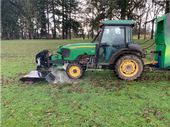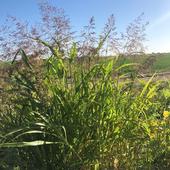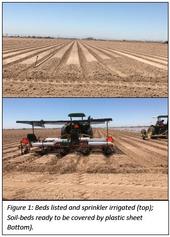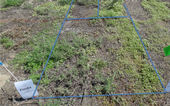- Author: Marcelo Moretti
- Posted by: Gale Perez

From the Weeders of the West (WoW) blog ∴ March 11, 2021
Marcelo Moretti is a Professor in the Dept. of Horticulture at Oregon State University and an alumnus of UC Davis and California State University, Fresno.
***************
Managing...
- Author: Bob Johnson
- Posted by: Gale Perez

From the weekly newspaper for California Agriculture, Ag Alert • Dec. 2, 2020 • California Farm Bureau Federation
Advisors seek practical use of steam in weed control
By Bob Johnson
Steam-treating a shallow band of soil within the seed line before planting may offer, when combined with advanced cultivators, an economical weed control option for organic farmers and conventional growers looking to reduce herbicide use.
University of California specialists said their research in Salinas Valley vegetable fields this year showed the technique can significantly reduce weed pressure...
- Author: Margaret Gullette Lloyd
- Re-posted by: Gale Perez

From the Small and Organic Farm Advisor Blog
Johnsongrass in organics: Mow it?
Yes, mow it! Mowing works to at least prevent seed spread and regular mowing will weaken rhizomes.
Seed establishment has the greatest potential for the establishment and spread of johnsongrass and must be prevented. Therefore, mowing works to at least prevent seed spread. An individual plant can produce 28,000-30,000 seeds and a single inflorescence can measure 1,240 seeds...
- Author: Pratap Devkota

As we are in the mid-summer, many fields in the low desert region are preparing for soil solarization. Soil solarization is a widely adopted pest control method by organic growers in the low desert region. With the increase in organic production acreage in recent years, we are seeing more fields implementing soil solarization during summer.
Soil solarization is a method for controlling soilborne pathogens, insects, nematodes, and weed seeds & seedlings by disinfesting soil by the solar heat. Solarization is implemented during summer months, where soil is heated by covering with transparent polyethylene mulch/tarp. The plastic covering permits solar radiation/energy to penetrate and trap in the soil; thereby, building heat in...
- Author: Cheryl A. Wilen
- Posted by: Gale Perez

A few months ago I wrote about starting some tests looking at various postemergence herbicides for non-crop use. This project was initiated due to new ordinances some cities in southern California were considering or adopted that limited the use products containing glyphosate on city owned property. I changed up some of the products from the original test I did and repeated some others.
Some are listed as organic and some are organic but not be organically approved by a certifying agency e.g. OMRI. One is listed as a biopesticide (Fiesta). One is a synthetic pesticide (Finale) that may be a good replacement in certain situations.


